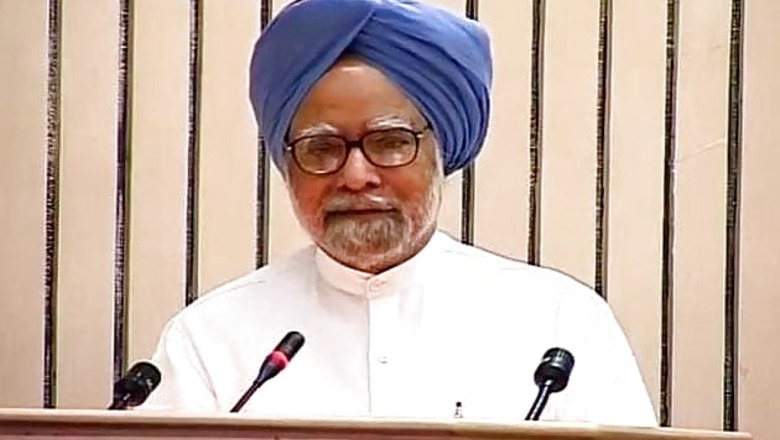
views
New Delhi: Prime Minister Manmohan Singh on Tuesday lauded the test of Agni-V missile that can hit targets as far as China's Beijing and the launch of the RISAT-1 satellite that can keep a watch over India in all weather conditions as major achievement of his government.
Releasing his government's performance report on its third anniversary at a dinner hosted at his Race Course Road residence in New Delhi, Manmohan Singh said it "saw the flawless test launch of the Agni-V long range ballistic missile and the successful fabrication and launch of the Risat-1 satellite, which can take images even in cloudy weather".
"I congratulate our scientists for these great achievements."
India's Defence Research and Development Organisation (DRDO) had tested Agni-V, the long range ballistic missile capable of reaching Beijing and Shanghai in China, on April 19, from the Wheeler Island off the Odisha coast.
The Indian Space Research Organisation (ISRO) placed RISAT-1 in orbit on April 26.
Agni-V, the released report said, is capable of carrying various forms of payloads, taking India into a select club of countries in the world.
The report noted that the UPA government has placed special emphasis on enhancing defence preparedness and upgrading the capabilities of the armed forces to meet security challenges.
Apart from listing the induction of the nuclear-powered submarine, INS Chakra, which was leased from Russia for 10 years, on April 4, the report also talked about several important defence equipment and systems being inducted, including transport aircraft, medium lift helicopters, interceptor boats and fleet tankers.
It said the ordnance factories and defence public sector undertakings maintained their trend of increased production and enhanced investments in research and development.
Other major milestones in the last one year, according to the report on security, included the Agni-IV 3,500-km range missile test, surface-to-surface tactical battlefield missile Prithvi-II test, and the induction of the indigenous light Combat Aircraft Tejas into the Indian Air Force.
It said the first fully modified aircraft for the indigenously developed Indian Airborne Early Warning and Control System took to the skies in December 2011.




















Comments
0 comment